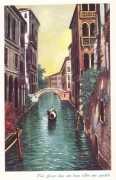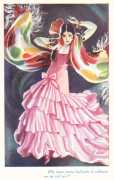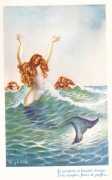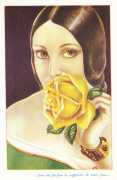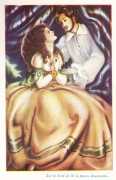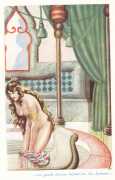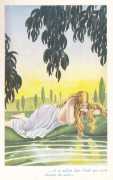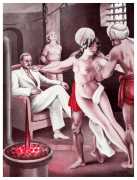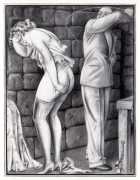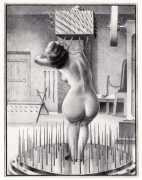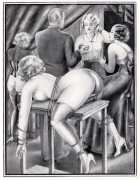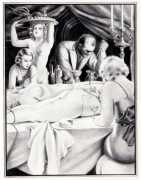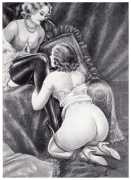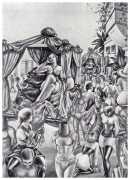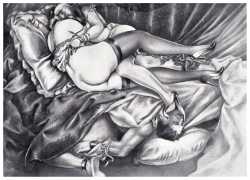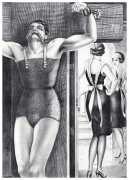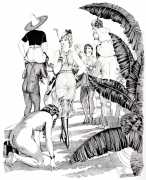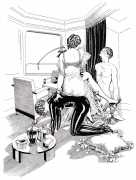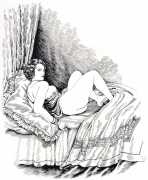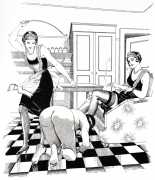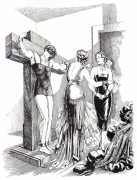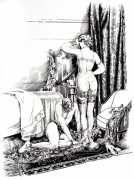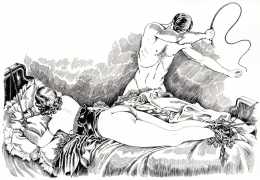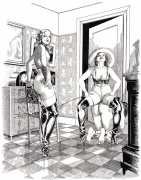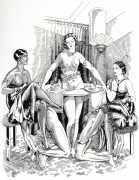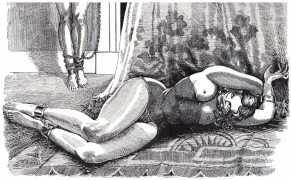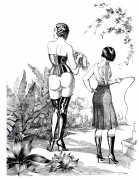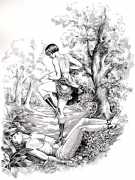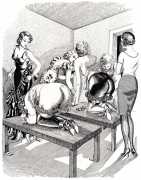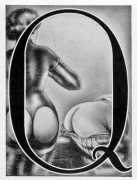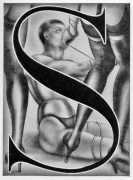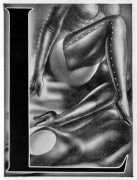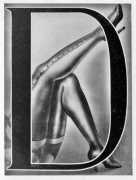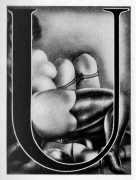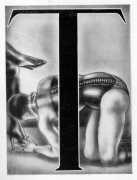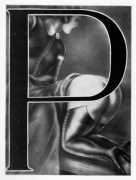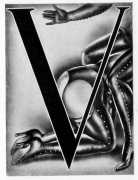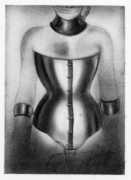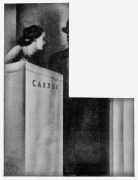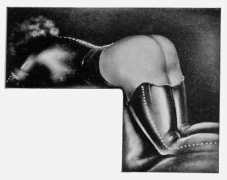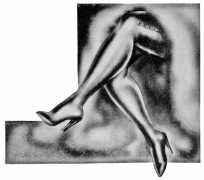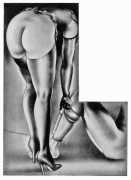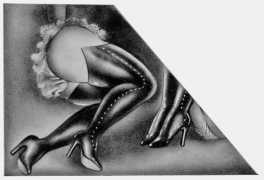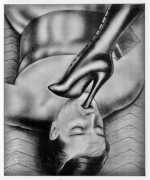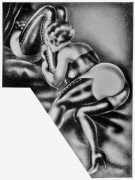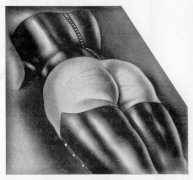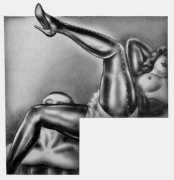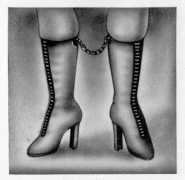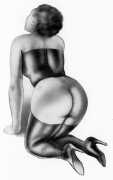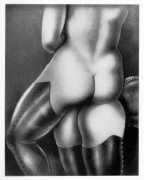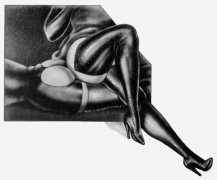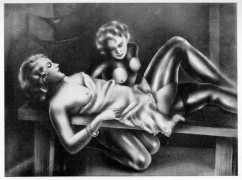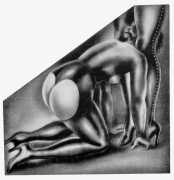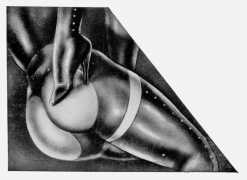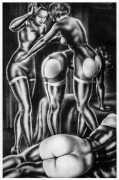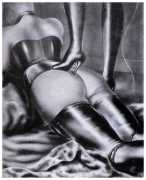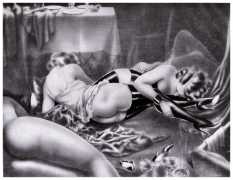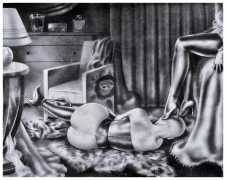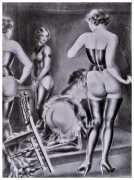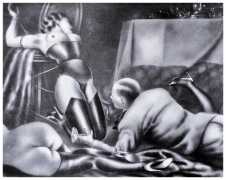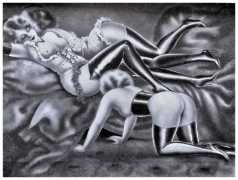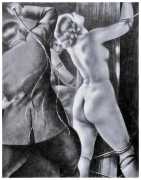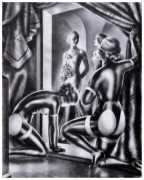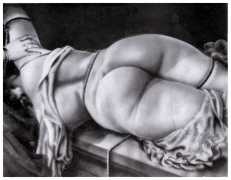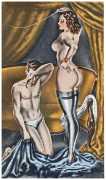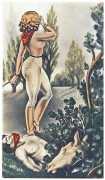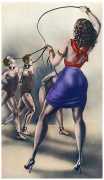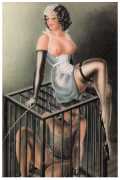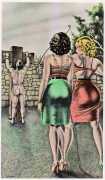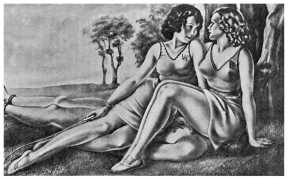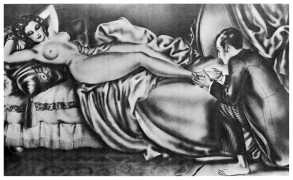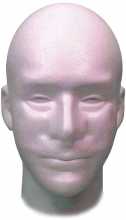 Between 1932 and 1936 one of the most sought-after illustrators of femdom and whipping titles for ‘discerning gentlemen’ frequenting the specialist bookshops of Paris went by the name of ‘Wighead’. There appear to be eleven books illustrated by the artist of this name, with no indication of his or her true identity. Four were published by Éditions du Couvre-feu, two by Le Jardin d’Éros, one by Éditions Curio, and five by the upmarket publisher Éditions Nilsson.
Between 1932 and 1936 one of the most sought-after illustrators of femdom and whipping titles for ‘discerning gentlemen’ frequenting the specialist bookshops of Paris went by the name of ‘Wighead’. There appear to be eleven books illustrated by the artist of this name, with no indication of his or her true identity. Four were published by Éditions du Couvre-feu, two by Le Jardin d’Éros, one by Éditions Curio, and five by the upmarket publisher Éditions Nilsson.
Though all these illustrations are either signed ‘Wighead’, or are clearly in the style of similarly-signed works, it is hard to believe that they are all by the same hand. The two earliest erotic titles to bear the ‘Wighead’ name, Les cruelles frénésies de Van den Rook (The Cruel Frenzies of Van den Rook) and À genoux esclave (On Your Knees, Slave), are more detailed and careful than the later volumes, and even these have quite different styles from each other; L’orgie dominatrice (The Dominatrix’s Orgy), on the other hand, has much in common with À genoux esclave. The group including Épouvantes voluptueuses (Voluptuous Horrors), Chair sanglée (Bloody Flesh), and Sous la croupe feminine (Under Female Control) share a similar realistic style, so they are probably all by the same artist.
The Nilsson editions of Shakespeare, Hans Christian Andersen, Gautier and Bernardin de Saint-Pierre, all signed ‘Wighead’ and published a couple of years earlier than the first ‘Wighead’ fetish title, appear to be by a completely different artist, very much poorer in quality though still with a clear understanding of composition.
What is known for certain is that the fetish specialist ‘Wighead’ is neither Eugene Klementieff nor Mario Laboccetta, as has sometimes been suggested.
So while the jury is out, there were possibly three or even four ‘Wigheads’, but why several French publishers would choose the same English pseudonym is hard to fathom. ‘Wighead’ has occasionally been used as slang for a judge (among the ‘discerning gentlemen’ maybe?) and for pubic hair, but neither really explains the strange and anomolous use of the soubriquet.


